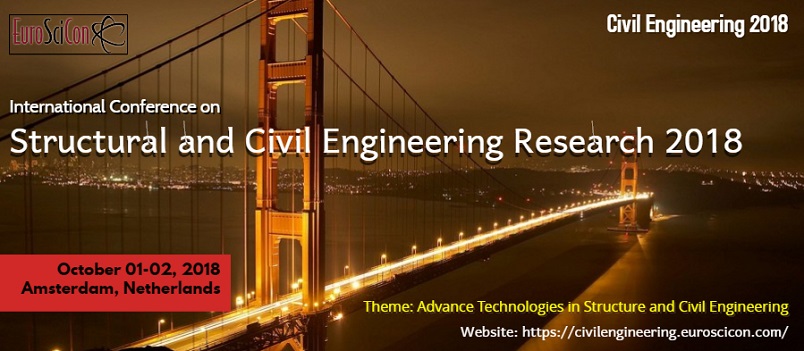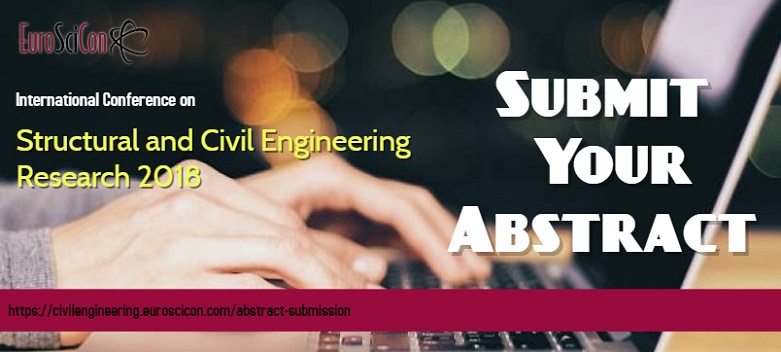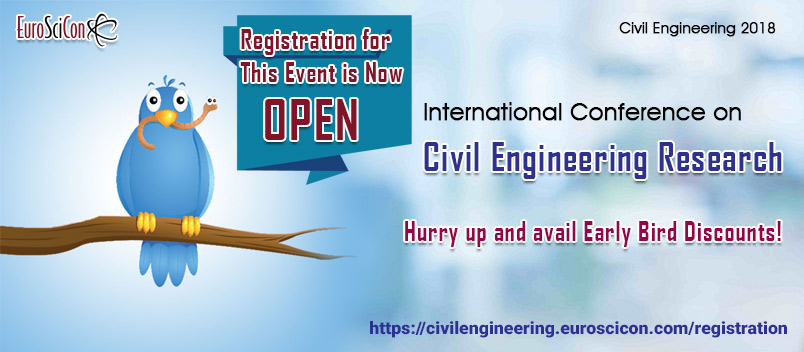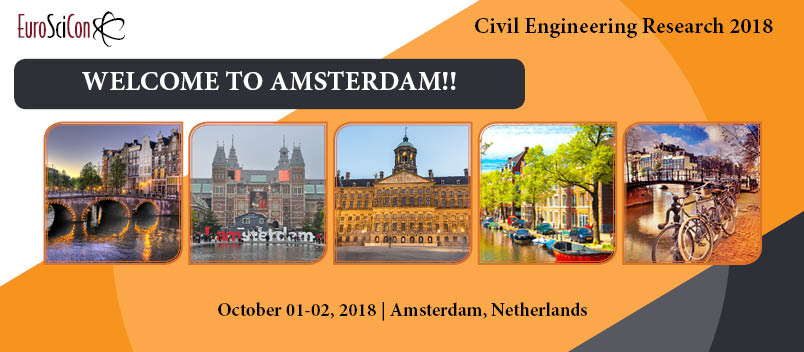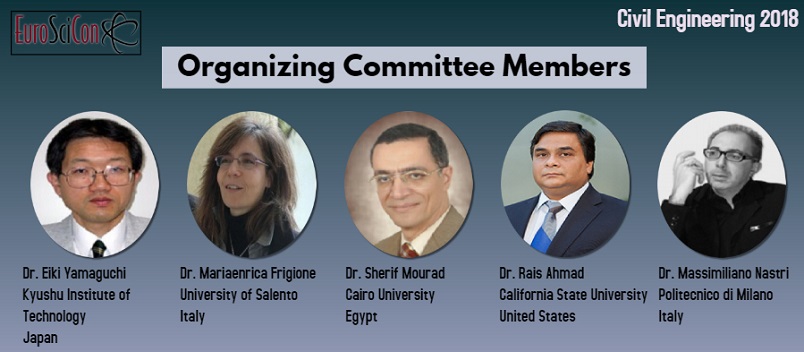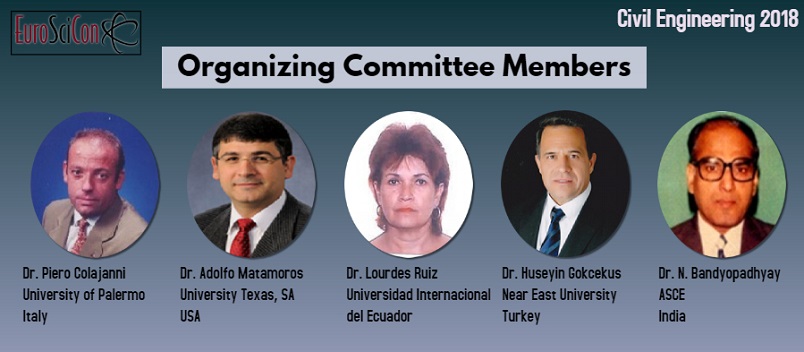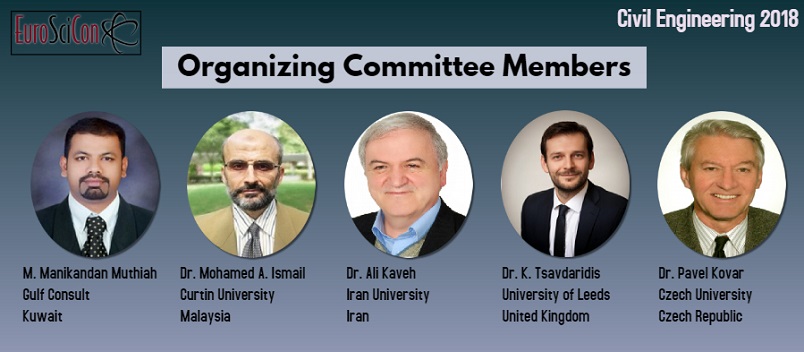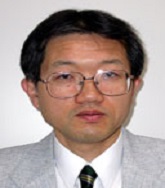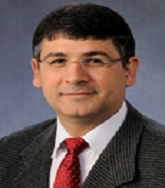Civil Engineering 2018
Welcome Message
For the benefit of the 2018 Structural and Civil Engineering Research Conference Organizing Committee, we anticipate inviting you to Amsterdam, Netherlands. The world focused on the field of Civil and Structure Engineering, this is your most opportunity to accomplish the greatest gathering of individual from the overall advancement undertakings. With the members from around the globe focused on learning about recent and advanced Civil Engineering and its advances.
Coordinate shows, fitting information, meet with present and potential steel merchants, make a sprinkle with another item offering, and get name affirmation at this 2 days event. Unbelievably renowned speakers, the most recent techniques, systems, and the most current updates in Construction and Steel Structure fields are indications of this social occasion.
It will provide scope to student to meet and interact with international speakers and professors, CEOs. This meeting joins masters, researchers, analysts and understudies from all locales of Civil Engineering, Architectural, Structural Engineering, Mechanics and other related districts, steel affiliations, steel merchants, building and improvement specialists, Developers, Contractors, Interior Design, Consultancy, Building Material creators of national importance. The Organizing Committee ceaselessly attempts to make what we believe is a remarkable specialized program at an extraordinary esteem.
We believe you will present a theoretical displaying of your most recent research or undertaking victories, and that you will take full preferred standpoint of the specialized sessions exhibited by your associates who have as of now liberally volunteered their chance and ability. This is likewise your chance to interface with condition of-the-hone experts and to reconnect with your companions and associates. Set aside opportunity to survey the Advanced Program. You'll see that the 2018 Conference program will offer new and improved proficient tracks, board discourses, superb keynote speakers and arranged strolling visits, among different exercises.

Much thanks to you for taking an interest in the 2018 Structural and Civil Engineering Research Conference. We anticipate your introductions and comrade. We hope you to see in at Amsterdam.
About Conference
EuroSciCon warmly welcomes to all the experts in the field of Structural and Civil Engineering to attend its upcoming conference on Structural and Civil Engineering Research, to be held during October 1-2, 2018, Amsterdam, Netherlands. The Conference is based on the Theme - Advance Technologies in Structure & Civil Engineering. Civil Engineering 2018 Conference will make the perfect platform for global networking as it brings all together speakers, renowned speakers, business persons ,CEO’s , across the globe to most exciting and memorable event ,with interactive sessions, poster presentation, world class exhibition. Advances in the field of Construction and Structures are one of the crucial factors in the economic powers of the developed countries and developing countries.
This is 2-days Meeting and you can participate in a number of educational formats including General Sessions, Poster Presentations, and Workshops/Symposium, Meet-the-Professor Sessions, Oral Presentations and other interactive and informal exchanges.
We hope you to see in Structural and Civil Engineering Research Conference 2018 at Amsterdam.
EuroScicon are corporate members of the following organisations
Royal Society of Biology
IBMS
British Society for Immunology
Rare Care UK
Opportunities for Conference Attendees
For Researchers & Faculty:
Speaker Presentations
Poster Display
Symposium hosting
Workshop organizing
For Universities, Associations & Societies:
Association Partnering
Collaboration proposals
Academic Partnering
Group Participation
For Students & Research Scholars:
Poster Competition (Winner will get Best Poster Award)
Young Researcher Forum (YRF Award to the best presenter)
Student Attendee
Group registrations
For Business Delegates:
Speaker Presentations
Symposium hosting
Book Launch event
Networking opportunities
Audience participation
For Companies:
Exhibitor and Vendor booths
Sponsorships opportunities
Product launch
Workshop organizing
Scientific Partnering
Marketing and Networking with clients
EuroSciCon organizes International Civil Engineering Meetings annually across Europe, Austria, Ireland, Germany, France, Liechtenstein, Lithuania, Finland, Luxembourg, Hungary, Italy, Norway, Poland, Denmark, Macedonia, Greece, Portugal, Romania, Czech Republic, Switzerland, United Kingdom, Belgium, Scotland, Latvia, Ukraine, Sweden, Denmark, Spain, Netherlands Russia, Bulgaria, France, with solitary subject of quickening logical revelations.
Topics:
Civil Engineering and Architecture
Building Technology and Construction Management
Steel Structures and Construction
Structural Analysis and Designing
Construction Automation and Robotics in Civil Engineering
Designing of Special Structures
Earthquake Engineering and Disaster Management
Computational Mechanics and Modelling
Geotechnical and Coastal engineering
Construction Market Research and Industry Analysis
Who should attend?
Engineers who are specialized on the specific fields like Civil engineers, Structural Engineers, Mechanical Engineers (To Present Their case reports and to update their Knowledge at the conference), Civil industry professionals, Building services engineer, Building control surveyor, Environmental engineers who are related to that topics. Bridge Construction Industries, Renewable Energy Industries, Software Publishing Houses specializing in Construction Design software’s are the Potential Exhibitors for the Respective Conferences. Civil Engineering associations, Earthquake Engineering Research Institutes, Institutions of Civil Engineering Surveyors, Institutions of Transportation Engineers; Students and Delegates in related areas.
Why to attend??
With members from around the world focused on the field of Civil Engineering; this is your single best opportunity to reach the largest assemblage of participants from the global Civil Engineering Industries. Conduct demonstrations, distribute information, meet with current and potential civil traders, make a splash with a new product line, and receive name recognition at this 2-days event. World-renowned speakers, the most recent techniques, tactics, and the newest updates in Civil Engineering fields are hallmarks of this conference. Conference brings together experts, researchers, scholars and students from all areas of Civil Engineering, Architectural, Structural Engineering, Geo-Technical, Environmental and other related areas, Civil associations, civil traders, building and construction professionals, Developers, Contractors, Interior Design, Consultancy, Building Material manufacturers.
About Amsterdam
Amsterdam, capital of the Netherlands! Nowadays the city has a populace of a little more than 790000 tenants and is the biggest city in the nation. Amsterdam is situated in the territory 'Noord-Holland', arranged in the west. It is a standout amongst the most prominent goals in Europe, getting more than 4.5 million vacationers every year.

Amsterdam has an extraordinary history. It is extremely unique for its huge and untouched historic focus. It has a rich structural history, ruled by water. It is a gathering point for every single diverse culture the world over and has an inviting state of mind towards guests. Understood for its historical centres, seedy area of town, coffeehouses yet additionally the considerable assortment of eating and drinking spots and night life. Accordingly a considerable measure of inns and inns can be found on various areas, esteem for cash and Amsterdam, capital of the Netherlands! Nowadays the city has a populace of a little more than 790.000 tenants and is the biggest city in the nation. Amsterdam is situated in the area 'Noord-Holland', arranged in the west. It is a standout amongst the most mainstream goals in Europe, getting more than 4.5 million travellers every year.
Amsterdam has an incredible history. It is exceptionally unique for its extensive and untouched historic focus. It has a rich engineering history, overwhelmed by water. It is a gathering point for every unique culture the world over and has an inviting demeanour towards guests. Surely understood for its exhibition halls, seedy area of town, bistros yet in addition the colossal assortment of eating and drinking spots and night life. Thus, a great deal of inns and inns can be found on various areas, esteem for cash and ambience.
Sessions and Tracks
Track 1: Civil Engineering and Architecture
Civil engineering is a professional engineering discipline that deals with the outline, development, and upkeep of the physical and normally constructed condition, including works like streets, spans, trenches, dams, airplane terminals, sewerage frameworks, pipelines and railways. Civil engineering is customarily broken into various sub-disciplines. It is the second-most established designing order after military engineering, and it is characterized to recognize non-military building from military engineering. Civil engineering happens in general society division from city through to national governments, and in the private part from singular property holders through to universal organizations.

Both Civil Engineering and Architecture are engaged with arranging and designing structures. Nonetheless, Architecture concentrates more on the spatial functionality and style of the improvement work and is more worried about the creativity, look, feel and functionality of the design, while Civil Engineering focuses on the basic components of the design, verifying that the structure can persevere through ordinary and extraordinary conditions. Despite the fact that Civil Engineers are associated with the design procedure, Architects play the lead part as far as the design of the structure. The Architect will start and make the design, including the shape, color and spaces of the improvement work then Civil Engineering experts will analyze it to discover approaches to influence the development to design conceivable. The civil specialist will be capable in finding appropriate materials, proposing adjustments and changes and assessing the auxiliary respectability to change the draftsman's vision into realization.
Track 2: Building Technology and Construction Management
Building technology examines the practices and specialized procedures utilized as a part of the construction of structural designing undertakings. It has slowly turned into an essential part of the construction business, as buildings have moved from being development of standard sorts to getting to be one-off models. Building execution prerequisites have turned out to be progressively demanding, and the quantity of materials and its providers has duplicated. Construction Management manages the conspiring, synchronizing, and building of a task from starting to conclusion. The essential procedure of construction has remained generally unaltered since the Middle Ages, however construction technology has changed fundamentally. The most punctual homes were worked of creature skins hung crosswise over sticks, or mud, straw, timber and stone, and were proposed simply to give protect. Early tries different things with concrete were presented by the old Romans, who blended lime and volcanic shake to manufacture a large number of their most celebrated structures.
Buildings are presently developed from a baffling exhibit of interrelated frameworks and congregations that must cooperate to convey the required standard of execution. This requires the collaborative work of customer, advisors, providers, contractual workers and sub-temporary workers to appropriately get ready arranging applications, building controls entries, entries for projects, for example, BREEAM, construction documentation, operation and maintenance manuals and so on.
Track 3: Steel Structures and Construction
Structural Steel is a classification of steel utilized for making development materials in an assortment of shapes. Numerous structural steel shapes appear as a lengthened bar having a profile of a particular cross segment. Structural steel shapes, sizes, synthetic arrangement, mechanical properties, for example, qualities, stockpiling rehearses, and so on., are directed by guidelines in most industrialized nations.
Most structural steel shapes, for example, I-pillars, have high second snapshots of territory, which implies they are hardened in regard to their cross-sectional region and consequently can bolster a high load without inordinate hanging.
Some common structural shapes are:
- I-beam (I-shaped cross-section)
- Z-Shape (half a flange in opposite directions)
- HSS-Shape (Hollow structural section also known as SHS (structural hollow section) and including square, rectangular, circular (pipe) and elliptical cross sections)
- Angle (L-shaped cross-section)
- Structural channel, or C-beam, or C cross-section
- Tee (T-shaped cross-section)
- Rail profile (asymmetrical I-beam)
- Bar (a piece of metal, rectangular cross sectioned (flat) and long, but not so wide so as to be called a sheet)
- Rod (a round or square and long piece of metal, see also rebar and dowel)
- Plate, metal sheets thicker than 6 mm or 1⁄4 inch.

A steel building is a metal structure created with steel for the interior help and for outside cladding, instead of steel confined buildings which for the most part utilize different materials for floors, dividers, and outer envelope. Steel buildings are utilized for an assortment of purposes including capacity, work spaces and living settlement. They are characterized into particular kinds relying upon how they are utilized.
Track 4: Structural Analysis and Designing
Structural analysis is an essential subject of structural designing that assesses the distinctive loads on structures, and their effects. It is an exact technique to learn the ability of the structures to withstand the normal loads, and help with planning the structures in like manner.
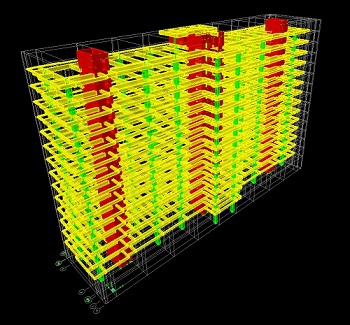
Structural analysis is done by an examination of the genuine structure, on a model of the structure made on some scale, and by the use of numerical models. Tests are directed on the genuine structure when creation is expected of comparable structures in expansive amounts, similar to edges of a specific auto, or when the test costs are satisfactory because of the noteworthiness of the assignment. At the point when components of the primary structures are to be inspected, at that point models are utilized for the estimation of the diverse burdens to be persevered. Most auxiliary investigations are directed on the scientific models, in which the model could be flexible or inelastic, powers might be static or dynamic, and the model of the structure may be two dimensional or three dimensional.
Structural analysis is an essential subject of structural designing that assesses the distinctive loads on structures, and their effects. It is an exact technique to learn the ability of the structures to withstand the normal loads, and help with planning the structures in like manner.
Track 5: Reinforced Concrete Structure
Reinforced Concrete is the concrete in which steel is inserted in such a way, to the point that the two materials act together in opposing powers. The reinforcing steel—bars, bars, or work—ingests the tractable, shear, and now and again the compressive stresses in a concrete structure. Plain concrete does not effectively withstand ductile and shear stresses caused by wind, tremors, vibrations, and different powers and are in this way inadmissible in most basic applications. In reinforced concrete, the rigidity of steel and the compressive quality of concrete cooperate to enable the part to manage these stresses over significant ranges. The innovation of reinforced concrete in the nineteenth century altered the development business, and concrete wound up one of the world's most normal building materials.
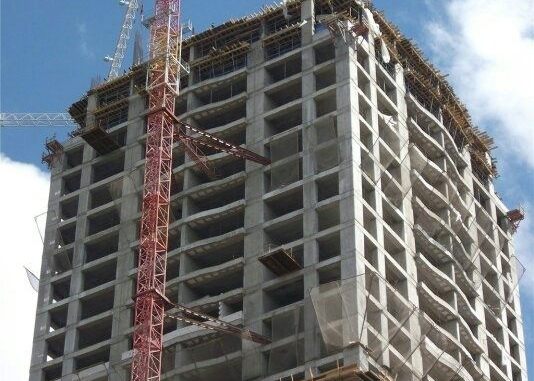
Track 6: Remote Sensing and GIS
A Geographic Information System (GIS) is a computer-based system for dissecting and plotting common occasions on earth. GIS innovation coordinates shared database tasks, for example, inquiry and factual examination, with maps. GIS controls area based information and offers apparatuses for show and investigation of various insights, populace attributes, financial improvement, and vegetation systems. Remote detecting is the investigation of utilization of sensors on aircrafts and satellites for making estimations of the earth. These sensors assemble information as pictures and gives undaunted capacities to breaking down, imagining and controlling those photos. Remote detected symbolism is brought together inside a GIS.
Track 7: Geology in Civil Engineering
Engineering geology is the utilization of the geology to engineering study to assure that the land factors with respect to the area, plan, development, task and support of engineering works are perceived and represented. Engineering geologists give land and geotechnical suggestions, investigation, and configuration related with human improvement and different sorts of structures. The domain of the engineering geologist is basically in the region of earth-structure cooperations, or examination of how the earth or earth forms affect human made structures and human exercises.
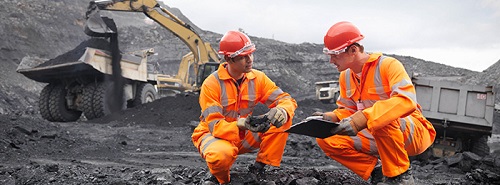
Track 8: Environmental Engineering
Environmental Engineering is the branch of engineering that is worried about shielding individuals from the impacts of unfavorable environmental impacts, for example, contamination, and additionally enhancing environmental quality. Environmental specialists work to enhance reusing, squander transfer, general wellbeing, and water and air contamination control.

Track 9: Construction Automation and Robotics in Civil Engineering
Applications of automation and robotics are stated as part of the answer to enhance productivity, quality, working conditions, and skilled labor shortages within the construction industry. One potential area of significance is that of infrastructure rehabilitation. Construction phase is one of the essential factors of civil engineering structures. The achievement of a challenge depends on how well the construction phase is executed. Efficient and economical construction is particularly essential due to the increasing complexity of systems being built, the supply of improved materials and construction gadget. Typically in production field, robots are stationary and product actions alongside the assembly line. Automation is simpler to include because every product is equal with respective obligations performed over and over.
There is a need to develop a robotic system for full-scale experimentation for realistic assessment of automation in the construction industry.
Some aspects of robotization and automation to demonstrate the applicability of robotics in construction industry are:
- Automation and robotics in construction sector and precast concrete industry
- Automation and robotics in prefabrication of masonry and on site masonry construction
- Automation and robotics in timber construction
- Automation and robotics in the production of steel components
- Automation and Robotics in Surveying Processes
- Risk and Safety Analysis and Education in Construction
- Innovation Management in Sustainable Construction
- Automation in Construction Quality Control
- Interface Management and Data Exchange in Construction
Track 10: Modular Constructions
Modular Construction is a term used to portray the utilization of processing plant created pre-designed building units that are conveyed to site and collected as huge volumetric parts or as generous components of a building. The modular units may frame finish rooms, parts of rooms, or separate very adjusted units, for example, toilets or lifts. The accumulation of discrete modular units more often than not shapes a self-supporting structure in its own particular right or, for tall structures, may depend on an autonomous basic system.
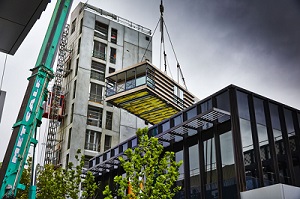
The main sectors of application of modular construction are:
- Private housing
- Social housing
- Apartments and mixed use buildings
- Educational sector and student residences
- Key worker accommodation and sheltered housing
- Public sector buildings, such as prisons and MoD buildings
- Health sector buildings
- Hotels
Track 11: Transportation Engineering
Transportation Engineering is the use of scientific principles and advances to the planning, design, analysis, operation, and management of transportation frameworks for a full scope of methods of transportation, e.g. thruway, urban travel, air, rail and water, so as to accommodate the development of individuals and merchandise starting with one place then onto the next in a protected and effective way. As a sub-train of Civil Engineering, this claim to fame is composed around society's have to give a satisfactory transportation foundation and includes wide connection with different controls. We require a wide scope of consistently advancing, huge scale transport foundation, including street, rail, air and water. Transport engineers evaluate and advance our versatility framework systems to meet travel and cargo demands, while guaranteeing wellbeing, value and manageability, at negligible levels of blockage and cost.
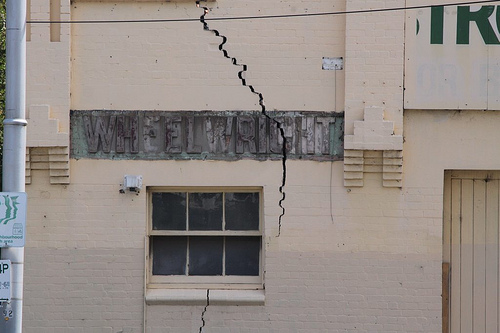
Track 15: Footing
The term Footing is used as a part of conjunction with shallow establishments generally. Footing is an establishment unit built in block work, stone work or cement under the base of a divider or a segment to distribute the heap over a substantial territory.
Footing are the structure individuals which spread and appropriate the heap conveyed from the super Structure to the dirt underneath the ground over a huge region .They goes under the class of shallow establishment and are utilized at places ,where the dirt with great bearing limit is accessible inside a little profundity beneath the ground surface . Footing are favored over the profound establishments as they ended up being temperate when contrasted with profound establishments.
Track 16: Metal fabrication
Metal Fabrication is the way toward building machines and structures from crude metal materials. The procedure incorporates cutting, consuming, welding, machining, framing, and get together to make the last product. Metal fabrication ventures incorporate everything from hand railings to overwhelming gear and apparatus. Particular subsectors incorporate cutlery and hand instruments; building and auxiliary metals; equipment manufacturing; spring and wire manufacturing; screw, nut, and fastener manufacturing; and forging and stamping.
The principle advantage of metal fabrication shops is the centralization of these numerous procedures that are frequently required to be performed in parallel by means of an accumulation of sellers. A one-stop metal fabrication shop enables contractual workers to restrain their need to work with various sellers to finish muddled undertakings.
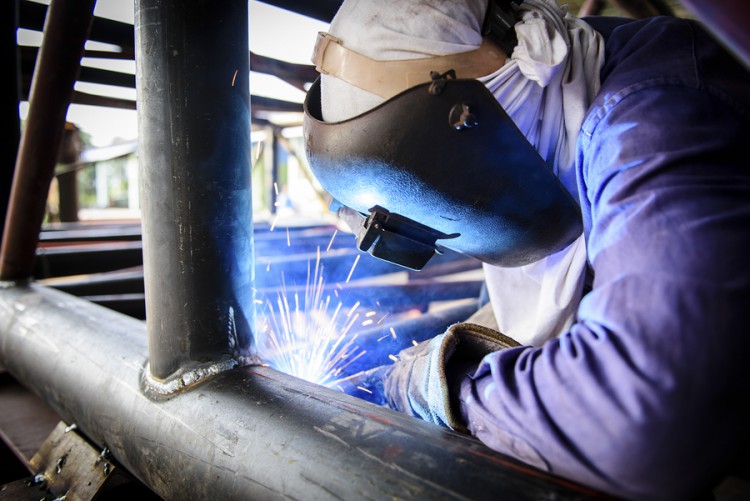
Track 17: Tunnel Construction
Tunnels are dug in sorts of materials fluctuating from delicate mud to hard shake. The technique for burrow development relies upon such factors as the ground conditions, the ground water conditions, the length and distance across of the passage drive, the profundity of the passage, the coordination of supporting the passage removal, the last utilize and state of the passage and proper hazard administration.
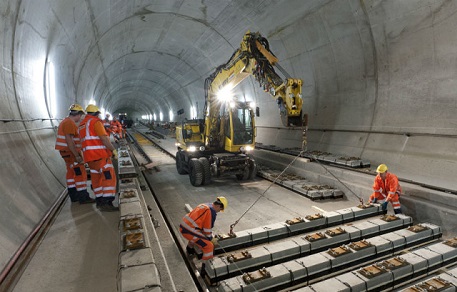
There are three fundamental kinds of tunnel construction in common use:
- Cut-and-cover tunnel (constructed in a shallow trench and then covered over)
- Bored tunnel, constructed in situ, without removing the ground above. They are usually of circular or horseshoe cross-section.
- Immersed tube tunnel, sunk into a body of water and laid on or buried just under its bed.
Track 18: Pavement Design
The Pavements can be characterized in view of the basic execution into two, flexible pavements and rigid pavements. In flexible pavements, wheel loads are exchanged by grain-to-grain contact of the total through the granular structure. On the contrary, in rigid pavements, wheel loads are exchanged to sub-level soil by flexural quality of the asphalt and the asphalt demonstrations like a rigid plate (e.g. bond solid streets). Notwithstanding these, composite pavements are likewise accessible. A thin layer of flexible asphalt over rigid asphalt is perfect asphalt with most alluring qualities. In any case, such pavements are once in a while utilized as a part of new development as a result of high cost and complex investigation required.
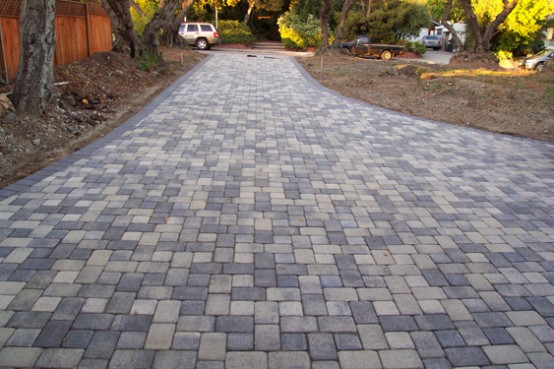
Track 19: Water Resource Engineering
Water Resources engineering is the quantitative investigation of the hydrologic cycle - the conveyance and flow of water connecting the world's environment, land and seas. Surface spillover is estimated as the contrast amongst precipitation and reflections, for example, penetration (which recharges groundwater stream), surface stockpiling and dissipation. Applications incorporate the administration of the urban water supply, the plan of urban tempest sewer frameworks, and flood forecasting.
Applications incorporate the outline of pressure driven structures, for example, sewage courses, dams and breakwaters, the administration of waterways, for example, disintegration assurance and flood insurance, and ecological administration, for example, forecast of the blending and transport of contaminations in surface water.
Track 20: Earthquake Engineering and Disaster Management
Earthquake engineering is a logical field in charge of ensuring society, the customary environment, and the man-made condition from shakes by compelling the seismic peril to socio-financially palatable levels. Disaster management is the association and administration of properties and obligations with respect to dealing with each and every piece of emergencies, particularly status, response and recovery to reduce the impact of calamities. Any disaster can meddle with essential administrations, for instance, medicinal administrations, control, water, sewage, evacuation and transportation. The impedance can really impact the prosperity, social and financial systems of neighborhood gatherings and countries. Disasters negatively affect people long after the incite affect has been confronted. Cockeyed disaster management systems can have a basic negative impact on the setbacks and additionally on patrons.
Track 21: Rock Mechanics
Rock Mechanics covers the experimental and theoretical parts of rock mechanics, including research centres and field testing, techniques for calculation and field perception of basic conduct. The diary keeps up the solid connection between designing topography and rock building, giving a scaffold between crucial advancements and common sense application. Scope incorporates case histories on outline and development of structures in rock, for example, underground openings, extensive dam establishments and rock slants.
Fields of premium incorporate rock mechanics in all its changed angles including research centres testing, field examinations, computational strategies and outline standards. The diary additionally gives an account of utilizations in burrowing, rock inclines, vast dam establishments, mining, building and designing geography.
Track 22: Computational Mechanics and modelling
Computational mechanics is a continuously developing field with influence on both science and industry in each part of engineering. It is in charge of dealing with mechanical issues on the introduction of numerical gauge systems, including discretization of the concealed conditions in both space and time. It draws on the requests of material science, mechanics, arithmetic and software engineering, and incorporates applying numerical methods to various issues in science and designing. The general degree of work in computational mechanics incorporates focal examinations of multiscale wonders and methods in structural designing, from kilometer-scale issues to an impressively better scale up to and including the nano-scale.
Current research in computational mechanics dealing with kilometer-scale issues incorporates numerical simulation of folding and fracturing of sedimentary rock strata utilizing combined elastoplastic-damage continuum hypothesis alongside upgraded limited component (FE) techniques for shear localization analysis, and in addition simulation of regional scale earthquake fault nucleation and engendering utilizing a limited deformation stick-slip law with a variable coefficient of friction.
Track 23: Soil Nailing
Soil Nailing is a method used to fortify and reinforce existing ground. Soil nailing comprises of introducing firmly dispersed bars into an incline or removal as development continues from top down. It is a development medicinal measure to treat precarious common soil inclines or as a development method that permits the safe over-steepening of new or existing soil slants.

Track 24: Geosynthesis
Geosynthetics are manufactured items used to balance out terrains. They are by and large polymeric items used to take care of structural designing issues. This incorporates eight principle item classifications: geotextiles, geogrids, geonets, geomembranes, geosynthetic clay liners, geofoam, geocells and geocomposites. The polymeric idea of the items makes them reasonable for use in the ground where elevated amounts of sturdiness are required. They can likewise be utilized as a part of uncovered applications. Geosynthetics are accessible in an extensive variety of structures and materials. These items have an extensive variety of uses and are as of now utilized as a part of numerous common, geotechnical, transportation, geoenvironmental, pressure driven, and private improvement applications including streets, runways, railways, dikes, holding structures, supplies, waterways, dams, disintegration control, residue control, landfill liners, landfill covers, mining, aquaculture and farming.
Track 25: Geotechnical and Coastal Engineering
Geotechnical engineering is the branch of structural outlining worried about the building behavior of earth materials. Geotechnical outlining is essential in structural building, yet also has applications in military, mining, oil and other planning controls that are stressed over development occurring at first look or inside the ground. Geotechnical building uses gauges of soil mechanics and rock mechanics to inquire about subsurface conditions and materials; choose the noteworthy physical/mechanical and compound properties of these materials; evaluate dauntlessness of regular inclinations and man-made soil stores; review risks posed by site conditions; plot earthworks and structure foundations; and screen site conditions, earthwork and foundation construction.
Coastal engineering is a division of structural engineering in charge of the association, origination, development and safeguarding of takes a shot at the shoreline. The goals of these undertakings involve management of shoreline disintegration; change of route channels and harbors; insurance against flooding expedited by tempests, tides and even seismically activated waves (tsunamis); change of coastal entertainment; and management of contamination in close-by marine situations. Coastal engineering regularly incorporates the development of structures, notwithstanding the transportation and likely adjustment of shoreline sand alongside other coastal dregs.
Track 26: Construction Market Research and Industry Analysis
Construction, in the sense of architectural and civil engineering, is the building of real property. It is a standout amongst the most important stages of the way toward creating buildings. This service is important for infrastructure and building projects, consisting of three project services, which also include logistics and engineering. One or all three of these services can be given by an EPC contractor to a whole project or only a particular aspect of one. Other than contractors, other gatherings of professionals can meet up to perform construction work, including project managers, construction engineers, design engineers, project architects, logistics professionals, construction managers, plumbers, surveyors, electricians, laborers and skilled workers.
In order to finish a construction project, a range of factors have to be considered, including budgeting, logistics, safety of the construction site, building materials, public inconvenience, environmental impact and scheduling. Other factors that ought to be considered are financial, design and legal issues, especially since there's always the likelihood of a negative result during a construction project, for example, structural collapse and cost overruns. Construction of buildings can be done as a public or private endeavor. Either way, it requires choosing a construction gathering or firm. The procedure consists of determining construction management-at-risk, hard offer, design and assemble, management contracting, design-manufacture bridging and negotiated cost. To help make a financial plan for construction projects, it's basic for cost engineers, accountants and mortgage bankers to be a part of a construction team or endeavor.
Learn More
Civil Engineering Universities in Europe
Kingston University, England|University of Manchester, England|University of Aberdeen School of Engineering, Scotland|Anglia Ruskin University, England|University of Birmingham, England|University of Brighton, England|Brunel University London, England|Coventry University, England|University of Edinburgh, Scotland|Hanze University of Applied Sciences, Groningen, The Netherlands|Heriot-Watt University, Scotland|Lancaster University, England|Swansea University, Wales|University of Westminster, London|Aalborg University, Denmark|Antalya International University, Turkey|University of Bologna, Italy|Brno University of Technology, Czech Republic|Cork Institute of Technology, Republic of Ireland|Dresden University of Technology (TUD), Germany|Trinity College Dublin, Republic of Ireland|Ecole Centrale De Nantes, France|Helsinki Metropolia University of Applied Sciences, Finland|University of Liège, Belgium|University of Maribor, Slovenia|Norwegian University of Science and Technology (NTNU), Norway
Civil Engineering Universities in USA
Massachusetts Institute of Technology (MIT), United States|Virginia Tech, Blacksburg|Stanford University, Stanford|University of Texas, Austin|Georgia Institute of Technology, Atlanta|University of California, Berkeley|University of Illinois- Urbana-Champaign, Urbana|Purdue University- West Lafayette|Carnegie Mellon University, Pittsburgh|Cornell University, Ithaca|Eastern Michigan University, Ypsilanti, USA|Bowling Green State University, Bowling Green, USA|University of New Mexico, Albuquerque, USA|Massachusetts Institute of Technology, Cambridge, USA|Stanford University, Stanford, USA|California State University Los Angeles Campus, Los Angeles|New York University, New York, USA|Texas A & M University, College Station, USA|The University of Texas at Arlington, Arlington, USA|University of California (Los Angeles Campus), Los Angeles, USA|University of California (Berkeley Campus), Berkeley, USA|Purdue University, West Lafayette, USA|California Institute of Technology, Pasadena, USA|Georgia Institute of Technology , Atlanta, USA|California State University Long Beach, Los Angeles, USA|Northeastern University , Boston, USA|Texas A&M University–Kingsville, Kingsville, USA|New Jersey Institute of Technology, Newark, USA
Civil Engineering Universities in Asia
The University of Tokyo, Japan|National University of Singapore (NUS), Singapore|Tsinghua University, China|Kyoto University, Japan|Tokyo Institute of Technology, Japan|KAIST – Korea Advanced Institute of Science and Technology, South Korea|Nanyang Technological University (NTU), Singapore|The Hong Kong University of Science and Technology (HKUST), Hong Kong|Seoul National University (SNU), South Korea|Shanghai Jiao Tong University, China|Peking University, China|National Taiwan University (NTU), Taiwan|University of Hong Kong (HKU), Hong Kong|Tohoku University, Japan|Osaka University, Japan|Indian Institute of Technology Bombay (IITB), India|Indian Institute of Technology Delhi (IITD), India|Zhejiang University, China|Indian Institute of Technology Madras (IITM), India|The Chinese University of Hong Kong (CUHK), Hong Kong|Pohang University of Science and Technology (POSTECH), South Korea|Indian Institute of Technology Kanpur (IITK), India|University of Science and Technology of China, China|The Hong Kong Polytechnic University, Hong Kong|Indian Institute of Science, India|National Tsing Hua University, Taiwan|Nagoya University, Japan|Harbin Institute of Technology, China|Indian Institute of Technology Kharagpur (IITKGP), India|Korea University, South Korea|Indian Institute of Technology Roorkee (IITR), India
Top Companies Associated with Civil Engineering
- LEIGHTON
- STRABAG
- SNC-Lavalin
- HOCHTIEF
- TAISEI Corporation
- Murray & Roberts
- AECOM Technology Corp., Los Angeles
- Jacobs Engineering Group
- URS Corporation
- HDR, Inc.
- AECOM Technology Corporation
Major Societies and Associations around the Globe
- American Society of Civil Engineers (ASCE)
- American Society of Civil Engineers (ASCE)
- Institution of Civil Engineers
- The Institution of Civil Engineering Surveyors
- Institution of Engineers of Ireland
- Institute of Transportation Engineers
- Transportation Research Board
- European Association for Structural Dynamics
- American Association of Engineering Societies
- Civil Engineers
- Structural Engineers
- Civil Industry Professionals
- Building Services Engineer
- Building Control Surveyor
- Environmental Engineers
- Bridge Construction Industries
- Renewable Energy Industries
- Earthquake Engineering Research Institutes
- Institutions of Civil Engineering Surveyor
Software used in Civil Engineering
- Building Information Modeling
- AutoCAD Civil 3D
- SAP 2000
- Project management software
- HEC-RAS
- Micro Station
- ETABS
- World Congress on Construction and Steel Structure | November 16-18, 2015 Dubai, UAE
- Sustainable Civil Engineering | June 23-25, 2016 Cape Town, South Africa
- 2nd Global Geologists Annual Meeting | July 21-22, 2016 Brisbane, Australia
- International Conference on Recent Researches in Engineering, Science and Technology Salem, India
- IASTEM - The 2nd International Conference on Civil and Architectural Engineering(ICCAE) Singapore, Singapore
- 3rd International Conference on Rehabilitation and Maintenance in Civil Engineering Solo, Indonesia
- 3rd International Conference on Civil and Environmental Engineering (I2C2E) Berlin, Germany
- International Summit on Conventional and Sustainable Energies | March 30-31, 2018 | Orlando, USA
- 4th International Conference and Business Expo on Wireless, Telecommunication & IoT | May 28-29, 2018 | London, UK
- International Summit and Expo on Optical Fibre Communications | May 30-31 2018 | Auckland, Newzealand
- 9th Euro Biosensors & Bioelectronics Congress | September 13-14, 2018 | London, UK
- 2nd World Congress on Wind & Renewable Energy | June 14-15, 2018 | London, UK
Journal of Civil & Environmental Engineering | Journal of Material Sciences & Engineering | Journal of Architectural Engineering Technology | Journal of Applied Mechanical Engineering | Journal of Aeronautics & Aerospace Engineering | Methodology of Classifying the Causes of Occupational Accidents Involving Construction Scaffolding Using Pareto-Lorenz Analysis | Sustainable Decision-Making in Civil Engineering | Construction and Building Technology | Tsallis Entropy Theory for Modeling in Water Engineering: A Review | An Integrated Numerical Model for the Design of Coastal Protection Structures | Effect of Nano-CuO on Engineering and Microstructure Properties of Fibre-Reinforced Mortars Incorporating Metakaolin: Experimental and Numerical Studies | Finite Element Analysis of Grouting Compactness Monitoring in a Post-Tensioning Tendon Duct Using Piezoceramic Transducers | How to Align the University Curricula with the Market Demands by Developing Employability Skills in the Civil Engineering Sector | The Gigantism of Public Works in China in the Twenty-First Century | Nonlinear Modelling of Curved Masonry Structures after Seismic Retrofit through FRP Reinforcing | Experimental Investigation of Debris-Induced Loading in Tsunami-Like Flood Events | Analysis of Cylindrical Granular Material Silos under Seismic Excitation | Using Acoustic Emission Methods to Monitor Cement Composites during Setting and Hardening | Measurement of the Length of Installed Rock Bolt Based on Stress Wave Reflection by Using a Giant Magnetostrictive (GMS) Actuator and a PZT Sensor | Nanocarbons in Electrospun Polymeric Nanomats for Tissue Engineering: A Review | A Helicopter View of the Special Issue on Wave Energy Converters | A Two-Step Strategy for System Identification of Civil Structures for Structural Health Monitoring Using Wavelet Transform and Genetic Algorithms | Wind-Induced Fatigue Analysis of High-Rise Steel Structures Using Equivalent Structural Stress Method | Urban Resilience: A Civil Engineering Perspective | Experimental Study on Mechanical Properties and Porosity of Organic Microcapsules Based Self-Healing Cementitious Composite | Impedance-Based Non-Destructive Testing Method Combined with Unmanned Aerial Vehicle for Structural Health Monitoring of Civil Infrastructures | Tapered Polymer Fiber Sensors for Reinforced Concrete Beam Vibration Detection | Strain Rate Behavior in Tension of Reinforcing Steels HPB235, HRB335, HRB400, and HRB500 | Enhancing the Hydrophilicity and Cell Attachment of 3D Printed PCL/Graphene Scaffolds for Bone Tissue Engineering | Microstructure-Based Prediction of the Elastic Behaviour of Hydrating Cement Pastes | Assessment of Changes in Flood Frequency Due to the Effects of Climate Change: Implications for Engineering Design | An Experimental Study of a Data Compression Technology-Based Intelligent Data Acquisition (IDAQ) System for Structural Health Monitoring of a Long-Span Bridge | Study of Impact Damage in PVA-ECC Beam under Low-Velocity Impact Loading Using Piezoceramic Transducers and PVDF Thin-Film Transducers | Modelling Geotechnical Heterogeneities Using Geostatistical Simulation and Finite Differences Analysis | Engineering Properties of Self-Consolidating Lightweight Aggregate Concrete and Its Application in Prestressed Concrete Members | Effect of Aggregate Mineralogy and Concrete Microstructure on Thermal Expansion and Strength Properties of Concrete | A System-of-Systems Approach for Integrated Resilience Assessment in Highway Transportation Infrastructure Investment | Research on the Rational Yield Ratio of Isolation System and Its Application to the Design of Seismically Isolated Reinforced Concrete Frame-Core Tube Tall Buildings | Output-Based Structural Damage Detection by Using Correlation Analysis Together with Transmissibility | Toughness of Railroad Concrete Crossties with Holes and Web Openings | The Use of CFD in the Analysis of Wave Loadings Acting on Seawave Slot-Cone Generators | Deep Tunnel for Regulating Combined Sewer | Overflow Pollution and Flood Disaster: A Case Study in Guangzhou City, China | Development of a Tomography Technique for Assessment of the Material Condition of Concrete Using Optimized | Elastic Wave Parameters | The Influence of Hydrologic Parameters on the Hydraulic Efficiency of an Extensive Green Roof in Mediterranean Area | Flexural Strengthening of RC Slabs with Prestressed CFRP Strips Using Different Anchorage Systems | Engineering Behavior and Characteristics of Wood Ash and Sugarcane Bagasse Ash | Critical Data Source; Tool or Even Infrastructure? Challenges of Geographic Information Systems and Remote Sensing for Disaster Risk Governance | Properties of Cement Mortar by Use of Hot-Melt Polyamides as Substitute for Fine Aggregate | Virtual Placements to Develop Employability Skills for Civil and Environmental Engineering Students | Durability Indicators Comparison for SCC and CC in Tropical Coastal Environments | Effects of Biosolids and Manure Application on Microbial Water Quality in Rural Areas in the US | Feasibility of Frequency-Modulated Wireless Transmission for a Multi-Purpose MEMS-Based Accelerometer | Functionality Enhancement of Industrialized Optical Fiber Sensors and System Developed for Full-Scale Pavement Monitoring | Balancing Power Output and Structural Fatigue of Wave Energy Converters by Means of Control Strategies | A Wireless Fatigue Monitoring System Utilizing a Bio-Inspired Tree Ring Data Tracking Technique | The SSG Wave Energy Converter: Performance, Status and Recent Developments | Human Health Risk Assessment of Pharmaceuticals in Water: Issues and Challenges Ahead.
The Total Risk Analysis of Large Dams under Flood Hazards | Long-Term Downstream Effects of a Dam on a Lowland River Flow Regime: Case Study of the Upper Narew | Assessing the Impacts of Climate Change on River Discharge Dynamics in Oueme River Basin (Benin, West Africa) | A Comparison of the Energy Saving and Carbon Reduction Performance between Reinforced Concrete and Cross-Laminated Timber Structures in Residential Buildings in the Severe Cold Region of China | Influence of Parameter Sensitivity and Uncertainty on Projected Runoff in the Upper Niger Basin under a Changing Climate | Impacts of Climate Change on the Hydrological Regime of the Danube River and Its Tributaries Using an Ensemble of Climate Scenarios | Improving Hydro-Climatic Projections with Bias-Correction in Sahelian Niger Basin, West Africa | Multi-Basin Modelling of Future Hydrological Fluxes in the Indian Subcontinent | Assessment of Climate Change Impact on Reservoir Inflows Using Multi Climate-Models under RCPs—The Case of Mangla Dam in Pakistan | Coupling Land Use Change Modeling with Climate Projections to Estimate Seasonal Variability in Runoff from an Urbanizing Catchment Near Cincinnati, Ohio | Assessing the Impact of Climate Change and Extreme Value Uncertainty to Extreme Flows across Great Britain | Hydrological Appraisal of Climate Change Impacts on the Water Resources of the Xijiang Basin, South China | Assessing River Low-Flow Uncertainties Related to Hydrological Model Calibration and Structure under Climate Change Conditions | Mean Normalized Force Computation for Different Types of Obstacles due to Dam Break Using Statistical Techniques | Case Study: Effects of a Partial-Debris Dam on Riverbank Erosion in the Parlung Tsangpo River, China | A Multi-Faceted Debris-Flood Hazard Assessment for Cougar Creek, Alberta, Canada | Study on the Formation and Initial Transport for Non-Homogeneous Debris Flow | Modelling Tools to Analyze and Assess the Ecological Impact of Hydropower Dams | Share your Insights and Learn How Readers Discover Content | Seismic Responses of a Cable-Stayed Bridge with Consideration of Uniform Temperature Load | Parallel Dynamic Analysis of a Large-Scale Water Conveyance Tunnel under Seismic Excitation Using ALE Finite-Element Method | A New Finite Element Formulation for Nonlinear Vibration Analysis of the Hard-Coating Cylindrical Shell | 3D FE Analysis of RC Beams Externally Strengthened with SRG/SRP Systems | An Asymptotic Theory for the Nonlinear Analysis of Laminated Cylindrical Shells | Thermoelectrically induced nonlinear free vibration analysis of piezo laminated composite conical shell panel with random fiber orientation | The influence of triggers geometry upon the stiffness of cylindrical thin walled tubes | Buckling Analysis of 3D Braided Composite Cylindrical Shells under Axial Loads | Acoustic Emission Behavior of Early Age Concrete Monitored by Embedded Sensors | A New Fault Location Approach for Acoustic Emission Techniques in Wind Turbines | Transverse Crack Detection in 3D Angle Interlock Glass Fibre Composites Using Acoustic Emission | Non-Destructive Evaluation for Corrosion Monitoring in Concrete: A Review and Capability of Acoustic Emission Technique | Detection of failures of adhesively bonded joints using the acoustic emission method | Wood-cement inhibition revisited and development of new wood-cement inhibitory and compatibility indices based on twelve wood species | Functionalization of Sol-Gel Zirconia Composites with Europium Complexes | Mechanical Properties of Sandy Soil Improved with Cement and Nanosilica | Development of a Novel Guided Wave Generation System Using a Giant Magnetostrictive Actuator for Nondestructive Evaluation | Monitoring of Pre-Load on Rock Bolt Using Piezoceramic-Transducer Enabled Time Reversal Method | Monitoring of Grouting Compactness in a Post-Tensioning Tendon Duct Using Piezoceramic Transducers
Recycled aggregates; Construction and demolition waste; Thermal performance; Thermal conductivity; Nanofiltration; Tight ultrafiltration; Concentration Polarization; Fouling; Natural organic matter; Shredded EPDM rubber; Roof membrane; Lightweight fill; Retaining wall backfill; Strain transfer analysis; Clamped fiber Bragg grating (FBG) sensor; Shear-lag theory; Gauge ratio; Interlayer thickness; Strain transfer analysis; Shear-lag theory; Gauge Ratio; Interlayer thickness; System Engineering; Project governance; Quality assurance; Civil protection; Emergency management; Augmented reality; Crowd-mapping; Social networks; Sensor networks; Geomatics; Hydrogeology; Concrete sleeper; Crosstie; Design standard; Holes; Web opening; Railway infrastructure; Static performance; CFD modeling; Physical modeling; Wave forces; Wave pressures; Combined Sewer Overflow pollution; Deep Tunnel Engineering; DongHaoChong basin; Flood disaster; SWMM model; Tomography; Honeycomb; Pre-stressed concrete (PC); Imaging algorithm; Ray tracing; Wave propagation; Stormwater management; Green roof; Rainfall-runoff; Retention; Inter-event time; RC plate strengthening; CFRP strips; Prestressing; Mechanical anchorage; Gradient anchorage; Static loading tests; Cross-section analysis; Numerical Simulations; Biomass; Wood ash; Sugarcane bagasse ash; Characterization; Disaster Risk Management; Geographic information systems; Remote Sensing;Volunteered Geographic Information; Crowdsourcing; Critical infrastructure; Crisis mapping; Civil protection; Hot-melt polyamide; Heat treatment; Self-repairing; Hot-melt polyamide (HMP)/cement composite system; Physical adhesion; Self-compacting concrete (SCC); Conventional vibrated concrete (CC); Durability; Best management practices; Biosolids; Manure; Contamination of ground and surface waters; Microbial source tracking; Microorganisms; Pathogens; Risk assessment; Rural systems; Waterborne diseases; Water quality; Acceleration measurement; MEMS sensor; Prototype; Structural health monitoring; Vibration measurement; Voltage to frequency conversion; Wireless accelerometer; Pavements; Functionality enhancement of industrialized optical fiber sensors; Self-healing network system; Full-scale monitoring; Fatigue; Structural health monitoring (SHM); Rain-flow counting method; Data tracking of tree rings; Digital Signal Processing (DSP); Wireless sensor; PVDF; Wave Energy Converters; Wave energy; Wave basin experiments; WEC arrays/farms/parks; Point absorber; DHI shallow water wave Basin; Wave energy converter; Overtopping; SSG; Model tests; Human health; Pharmaceuticals; Mixture Toxicity; Risk Assessment; Uncertainty; Engineering Education; Interrelationships between people; Resources; Environment and development; Hands-on projects; Humanitarian development

